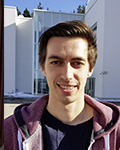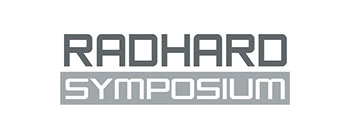Abstract

Overview of the 2023 R2E activities at CERN, with a focus on the SEE accelerator availability impact during the ion run
Daniel Söderström1, Giuseppe Lerner1 and Rubén García Alía1 on behalf of the R2E team at CERN
1CERN, 1211 Geneva, Switzerland
Abstract
At the European Organization for Nuclear Research (CERN), protons and heavy ions are accelerated to very high energies before being collided in four locations at the Large Hadron Collider (LHC) or sent to a broad variety of fixed-target experiments within CERN’s injectors. Operating the complex of particle accelerators utilized for this purpose requires control of a large number of electronic systems located in the harsh radiation environment created by the accelerated particles. Radiation hardness assurance (RHA) considerations of the equipment installed in the elevated radiation environments of the accelerator are key for a reliable operation of the machine, and thus for the physics output of the LHC experiments.
This contribution will further introduce the Radiation to Electronics (R2E) challenges and will cover some of the recent R2E activities related to the RHA of equipment at CERN, including investigations of the radiation-levels in the accelerator complex ([1], [2]), studies of energy deposition and induced single-event effects (SEE) in a range of radiation-testing facilities ([3]), mechanisms, testing, and RHA considerations of neutron-induced radiation effects ([4], [5]) and the coordination and main outcome of the HEARTS and RADNEXT EU projects coordinated by CERN. Included is also an overview of the accelerator performance during 2023 in terms of radiation-effects, focusing on the ion run which was performed during the final weeks of beam operation at CERN 2023.
References
[1] K. Biłko et al., IEEE Trans. Nucl. Sci., Vol. 70, No. 8, pp. 1606-1615, DOI: 10.1109/TNS.2023.3261181, 2023.
[2] A. Canesse et al., 14th International Particle Accelerator Conference, Venice, Italy, DOI: 10.18429/JACoW-IPAC2023-THPA046, 2023.
[3] R. García Alía et al., IEEE Trans. Nucl. Sci., Vol. 70, No. 8, pp. 1596-1605, DOI: 10.1109/TNS.2023.3260309, 2023.
[4] A. Coronetti et al., IEEE Trans. Nucl. Sci., Vol. 70, No. 8, pp. 1634-1642, DOI: 10.1109/TNS.2023.3239407, 2023.
[5] M. Cecchetto et al., IEEE Trans. Nucl. Sci., Vol. 70, No. 8, pp. 1587-1595, DOI: 10.1109/TNS.2023.3242460, 2023.
![[Translate to English:] [Translate to English:]](/fileadmin/uploads/intranet/events/radhard/2023/header-radhard2023.jpg)
